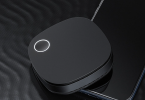Typically car headlights last somewhere between 500 to 1,000 hours. But there are various factors at work. Different types of headlights have different life advantages, so halogen, xenon, and other kinds can’t be expected to burn out at the same rate.
Some halogen bulbs are also brighter than the OEM bulbs. But the increase in brightness usually translates to smaller lifespans.
Some manufacturing defects and installation issues can also shorten the operational lifespan of a headlight bulb as well.
Contents [hide]
Time Duration Of Car Headlights Last
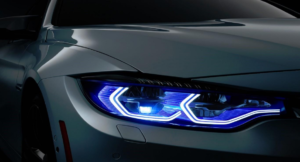
There are many broad categories of headlights, and the major differences between them are how long they can be expected to last.
Tungsten-Halogen
Average LifeSpan: 500-1000 hour
Xenon
Average LifeSpan: 10,000 hour
HID
Average LifeSpan: 2,000 hour
LED
Average LifeSpan: 30,000 hour
However, these numbers are just rough averages. Also, it is possible for headlights to last longer, or burn out quicker, than these averages. Once you find that your headlights burn out quite faster, then there might be an underlying issue.
How Long Do Car tungsten-halogen Headlights Last?

There’s a chance that your car shipped from the factory via halogen headlights as that’s what majority cars use. In the 1990s Halogen headlight bulb capsules are massively widespread. They are also sealed-beam headlights manufactured for older vehicles that are designed around halogen bulbs.
The filament in a halogen headlight bulb is tungsten. When electricity passes through the filament, it heats up and glows, and that’s where the light comes from.
In older sealed-beam headlights, the headlight was filled with a vacuum or inert gas. However, it works well for several years. Also, the durability of these pre-halogen tungsten bulbs suffered, Because of the procedure that tungsten reacts to being heated up to the point where it generates light.
When it becomes hot enough to void light, material “boils” off the surface of the filament. When the vacuum is present inside the bulb then the material tends to get deposited on the bulb. However, it shortens the operational lifespan of the headlight.
Modification in Halogen Headlight Technology
The latest tungsten-halogen bulbs technology is identical to much older sealed-beam headlights. Rather than they are filled with halogen. The basic technique at work is quite similar. When the tungsten filament becomes hot and emits ions. Then the halogen gas gathers the material and puts it back onto the filament rather than allowing it to settle on the bulb.
Important: Many factors affect the operational lifespan of the sealed-beam headlight or halogen headlight capsule. But a typical operational lifespan is between 500-1,000 hours. Brighter bulbs can shorter the amount of time.
What Are The Reasons Of Halogen Headlight Bulbs to Fail?
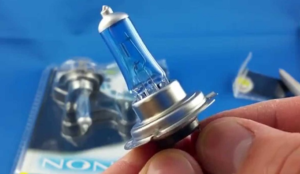
When the halogen bulbs age, and you use them, they become start to give off minimum light than they did when they were new. This arc is normal.
If you’re dealing with halogen capsules, which some latest vehicles use. Then the major cause of premature failure is some sort of contaminant getting on the bulb. This issue can be as harmless when the natural oils from the fingers of the person install the bulb. Or as obvious as dirt, water, or other contaminants present in the engine compartment of a car.
However, you can easily replace most headlight capsules. You can do it using basic tools but no tools at all. Also, it is very easy to damage a bulb while installation. But if any impurity is present on the exterior surface of a halogen bulb. Then it’s a safe bet that the bulb will prematurely burn out.
So you must be careful while installing a halogen capsule. Or else to erase any contaminants that get on a capsule prior while installing it.
In the sealed-beam halogen car headlights case, they are much more powerful and difficult to damage than capsules. So, breaking the integrity of the seal is still an amazing trick for failure. For instance, when a rock hits a sealed beam headlight. Or damage it, and enables the halogen gas to leak out. Then it’s going to fail or damage earlier than it would have otherwise.
Xenon, HID, & Other Headlights Last:
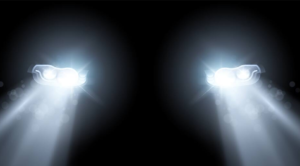
Xenon headlights are quite identical to halogen headlights when they use tungsten filaments. But rather than of a halogen gas like bromine or iodine, they simply use the noble gas xenon. The major difference is that besides halogen bulbs the xenon gas itself actually releases a bright white light.
Important: Xenon can slow the evaporation of material from a tungsten filament. So that tungsten-xenon headlights last longer than tungsten-halogen bulbs. The real lifespan of a xenon headlight will rely on a number of various factors. But it is possible for xenon headlight bulbs to last >10,000 hours.
HID stands for High-intensity discharge. HID headlights last longer than halogen bulbs, but not for tungsten-xenon bulbs. Rather than using a tungsten filament that glows. These headlight bulbs depend on electrodes somewhat identical to spark plugs. Besides igniting a mixture of fuel and air such as spark plugs, the spark excites the xenon gas and causes it to produce a bright, white light.
However, HID lights can last longer than halogen headlights. They can’t last as long as tungsten-xenon bulbs. The life expectancy for this sort of headlight is about 2,000 hours, which can be shortened by many factors.
What to Do About Burned Out, Broken or Exhausted Headlights
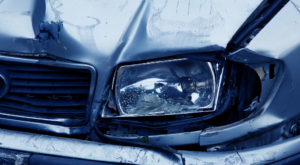
Well, headlight bulbs are certainly rated to last hundreds of hours. Also, real-world considerations get in the way. After you found that a headlight bulb burns out instantly, then there’s always a chance that you might be dealing with a manufacturing fault. However, some sort of contamination got on the bulb, but you might be able to take benefit of a manufacturer’s warranty.
Manufacturers are often warrantied Headlight bulbs for 12 months after the purchase date. So while you might have to move through hoops, there’s also a good chance you can get a free replacement when your headlights fail within the period of warranty.
Before you replace your damaged headlights. It’s the best idea to check the headlight assemblies. However, any contamination on the bulb can be the reason to fail early, a faulty or damaged headlight can definitely be an issue. For instance, when a rock punches a small hole in one of the assemblies, or the seal goes worst, water and road grime may be the reason to get inside the headlight assembly and damage your headlight bulb.
Conclusion:
That’s all about it. Is this article helpful? Do you want to share any other tips regarding the article then let us know below. For further queries and questions let us know in the comment section below!
Also Read:

